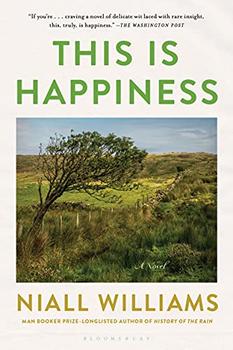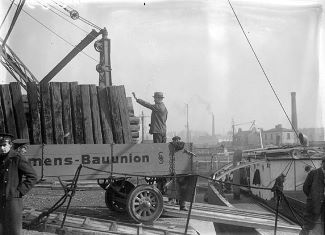Summary | Excerpt | Reviews | Beyond the Book | Read-Alikes | Genres & Themes | Author Bio

This article relates to This Is Happiness
 The personal events of Niall Williams's This Is Happiness are sparked by the impending arrival of electricity to Faha, a tiny hamlet in rural Ireland. The gradual electrification of this largely rural country was a decades-long process that extended over much of the middle part of the 20th century and that has been called the Quiet Revolution because of the extent to which it transformed the lives of ordinary Irish people.
The personal events of Niall Williams's This Is Happiness are sparked by the impending arrival of electricity to Faha, a tiny hamlet in rural Ireland. The gradual electrification of this largely rural country was a decades-long process that extended over much of the middle part of the 20th century and that has been called the Quiet Revolution because of the extent to which it transformed the lives of ordinary Irish people.
Electricity—largely fueled by local and privately held companies—had existed in Dublin since the late 19th century. But beginning in the 1920s, two developments began to pave the way for broader electrical reach. First, the Irish government approved an initiative to install a hydroelectric plant tied to Ireland's largest river, the Shannon, in 1925. Following successful construction of the Shannon dam and hydroelectric plant, the nationwide Electricity Supply Board (ESB) was established in 1927 to oversee Ireland's electrical supply and develop a nationwide electrical network.
In the mid-1940s, when some 400,000 Irish households still had no electricity, the project of rural electrification began in earnest, with an electrical infrastructure built one pole and one spool of cable at a time. Just as Williams chronicles in his novel, the ESB employed contractors to champion electricity in rural villages and to enlist local support (and labor) for the project. Priests were encouraged to preach the gospel of electricity to their parishioners, and enthusiastic early adopters were urged to enlist their friends and neighbors, since the ESB was more likely to bring service to a region if its residents could prove a groundswell of local support.
Each of the early 800 or so areas identified for rural electrification kept records and correspondence related to the decision to electrify, making for a fascinating glimpse into local history and politics archived at the ESB's headquarters. Although the electrification process was subsidized, it did require a modest connection fee paid by individual households. As Williams shows in his novel, not all residents in rural areas were immediately keen to get on the grid. Beyond the added expense, many rural Irish people resented the way the electrical poles crisscrossed farm fields or passed too close to public roads. Others claimed not to see the value of electricity, reasoning that they had gotten along long enough without it.
These objections aside, the transformative possibilities of electrical power were no joke; as one Irish Times columnist put it in 1948, "somebody – I cannot remember who – switched on the lights in some village – I cannot remember where – and rural electrification took her bow. And if that does not mean more to the country than all the rest of the year's events put together I shall be very surprised indeed." Some credit the advent of electricity with the diminishment of superstitious belief systems. Entrepreneurs, of course, saw the rural electrification program as a business opportunity—in the wake of the electricians who installed the power lines came salesmen eager to sing the praises of new electrical appliances and other modern conveniences. But arguably the most significant advance brought about by electric power was its ability to ease social isolation and enable social connection via televisions and telephones and at gathering places such as ballrooms and concert halls lit by electric lights.
The process of rural electrification was not accomplished overnight; according to the ESB's records, the last communities were not connected until 1978. But over the course of those several decades, the way of life for rural Irish people became dramatically different, enabling them to connect with the outside world—and with each other—in new and modern ways.
Machinery from Siemens-Bauunion for Shannon hydroelectric scheme being unloaded at Limerick docks, 1925
Filed under People, Eras & Events
![]() This "beyond the book article" relates to This Is Happiness. It originally ran in January 2020 and has been updated for the
August 2021 paperback edition.
Go to magazine.
This "beyond the book article" relates to This Is Happiness. It originally ran in January 2020 and has been updated for the
August 2021 paperback edition.
Go to magazine.
Your guide toexceptional books
BookBrowse seeks out and recommends the best in contemporary fiction and nonfiction—books that not only engage and entertain but also deepen our understanding of ourselves and the world around us.